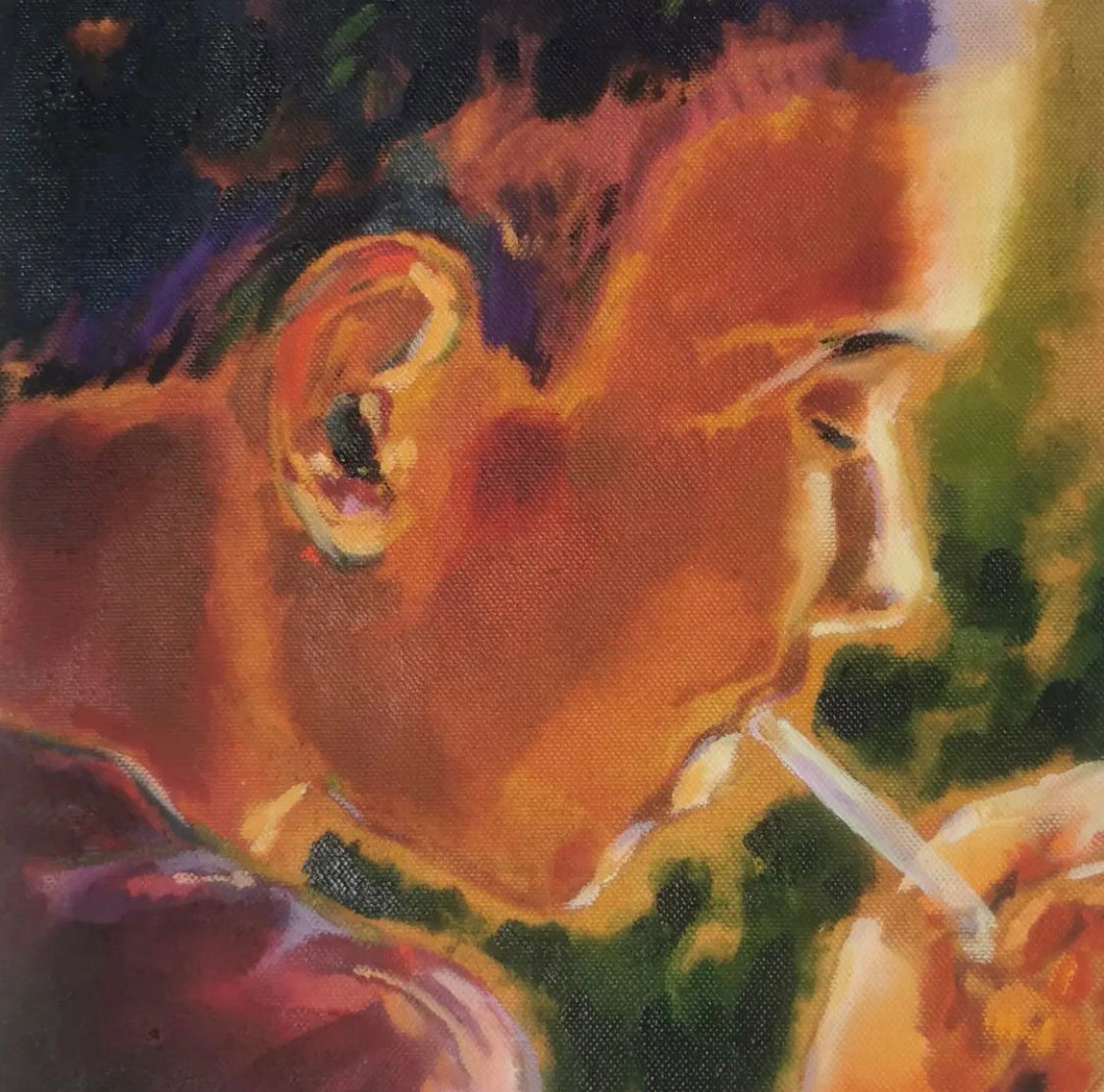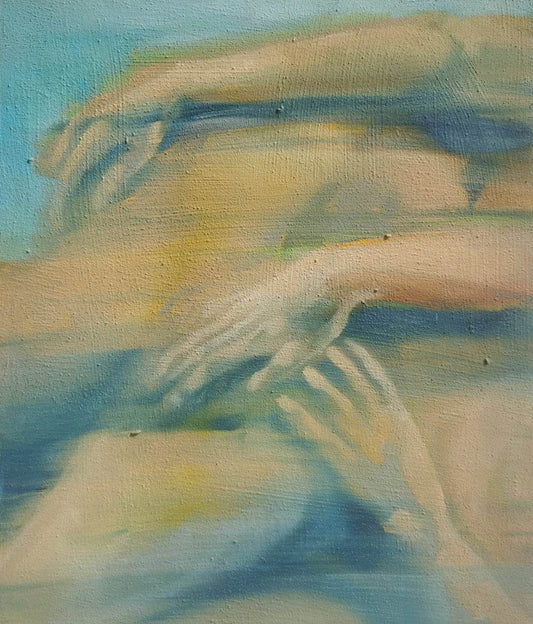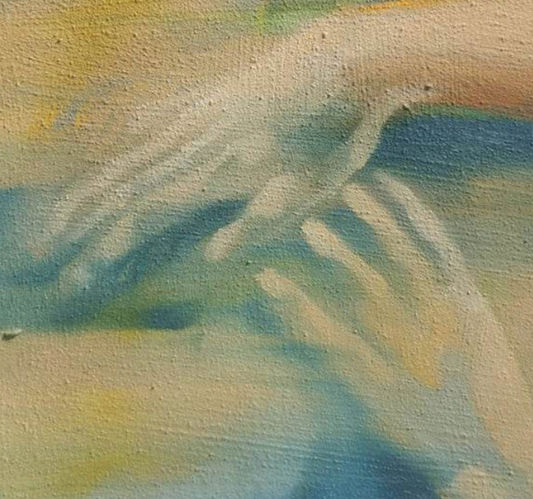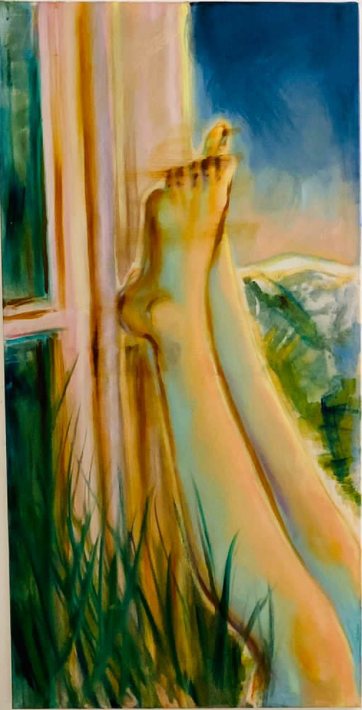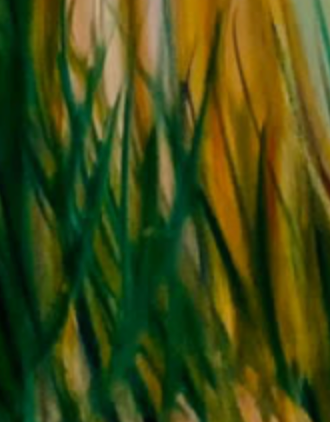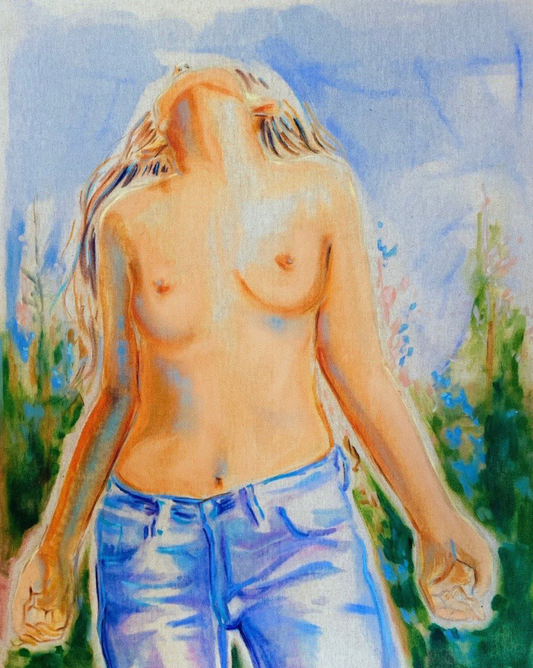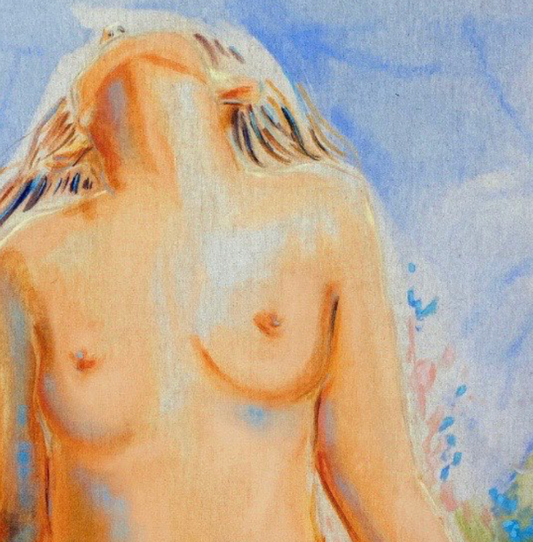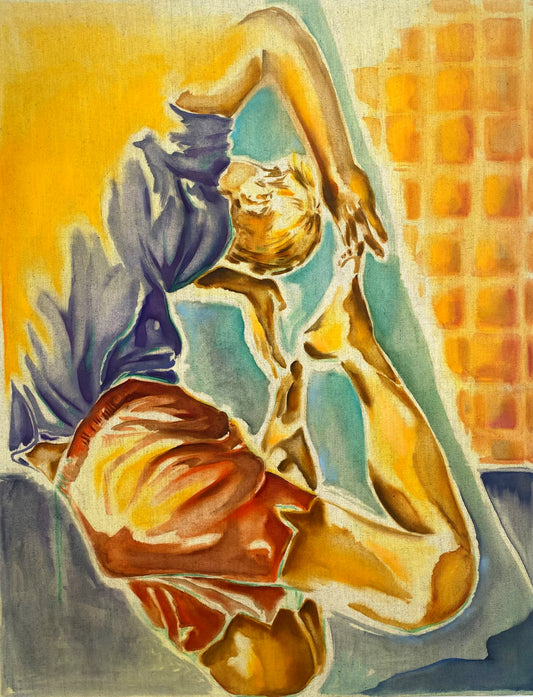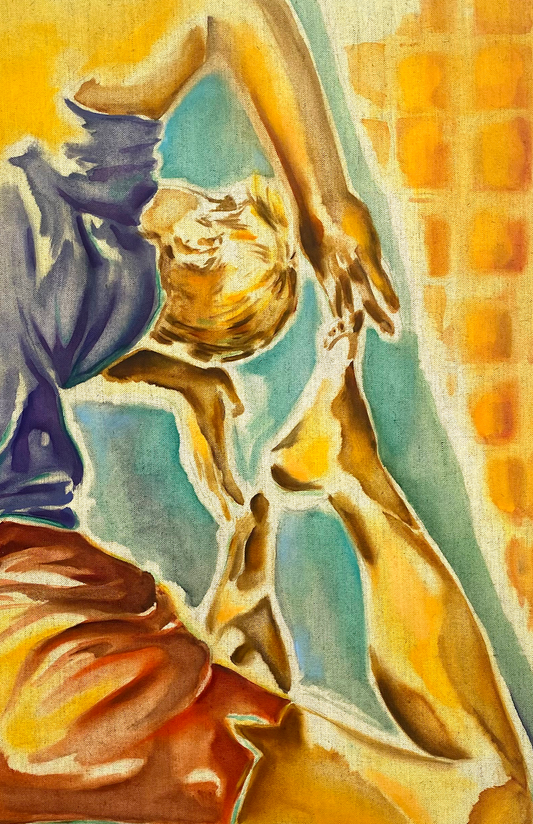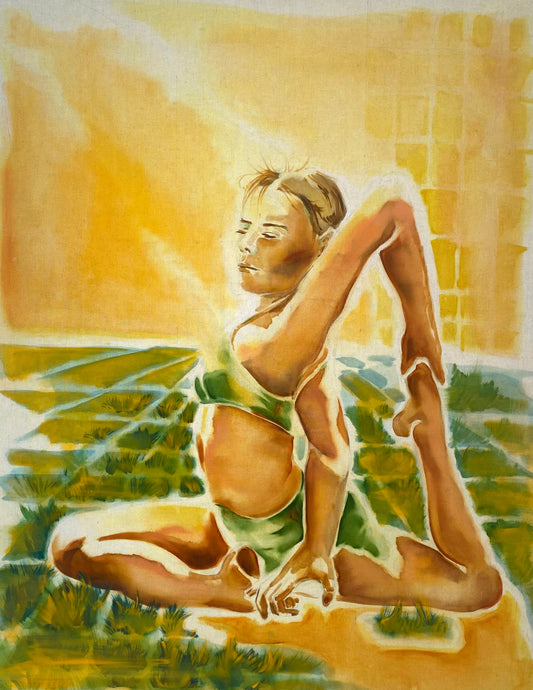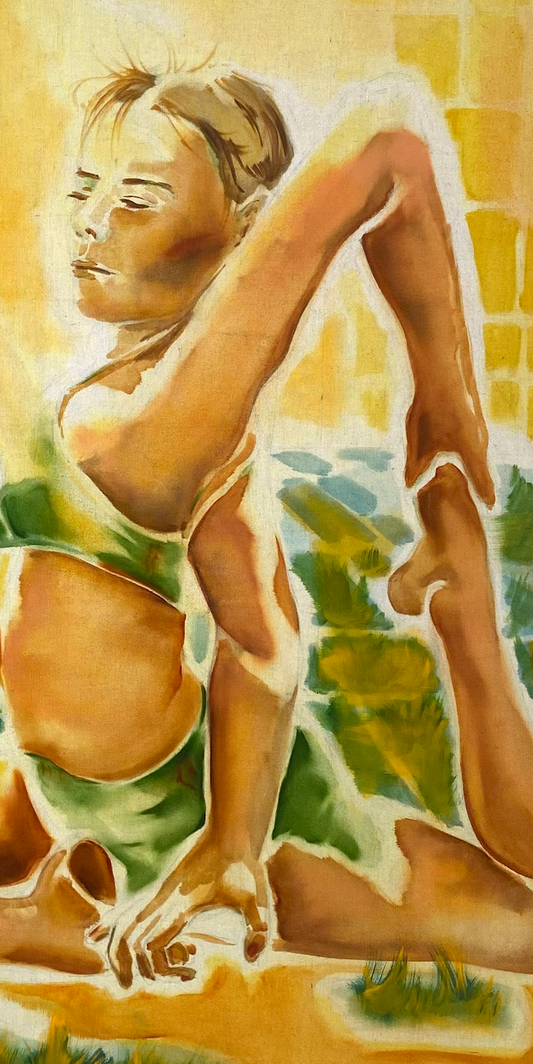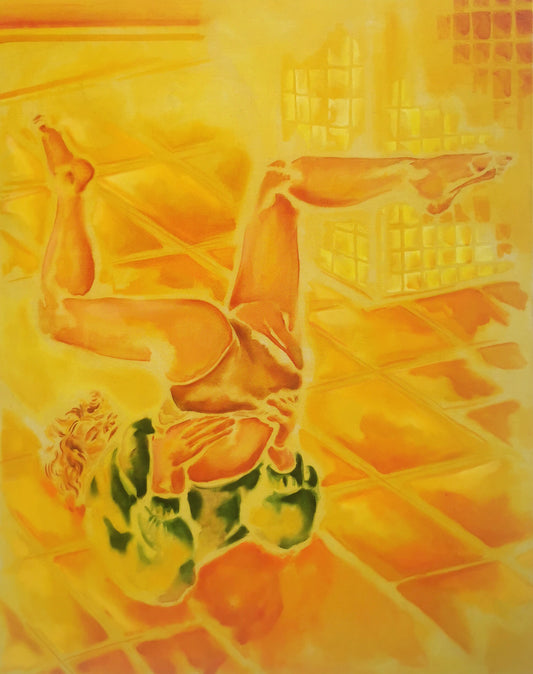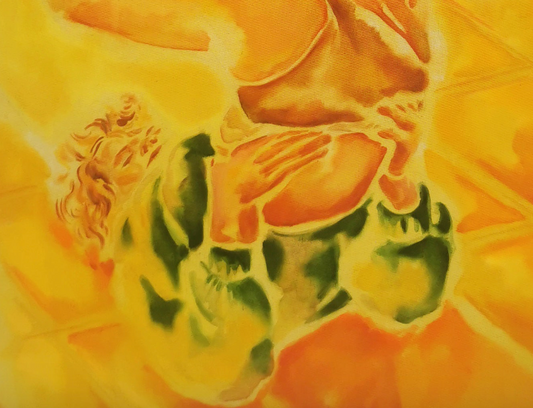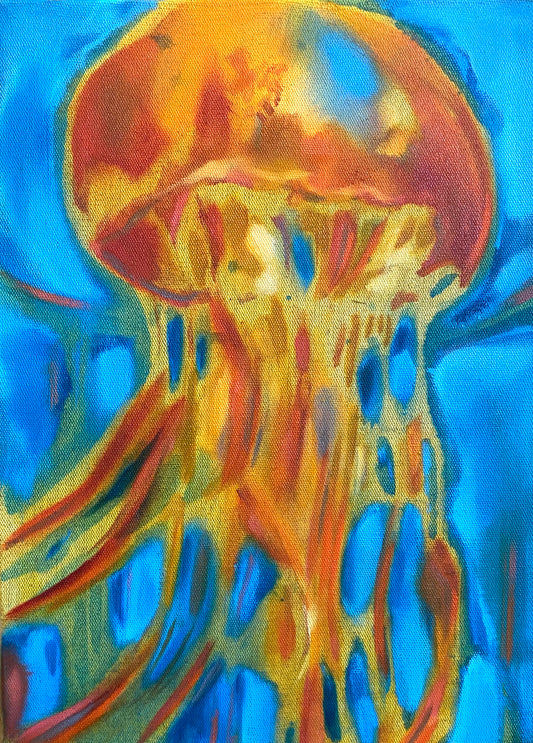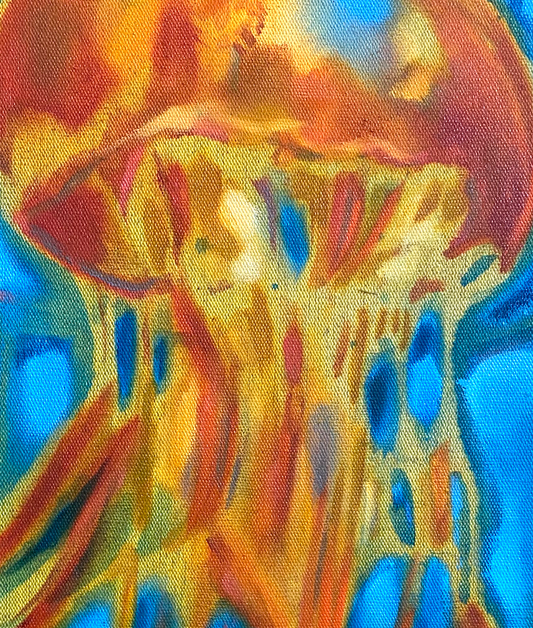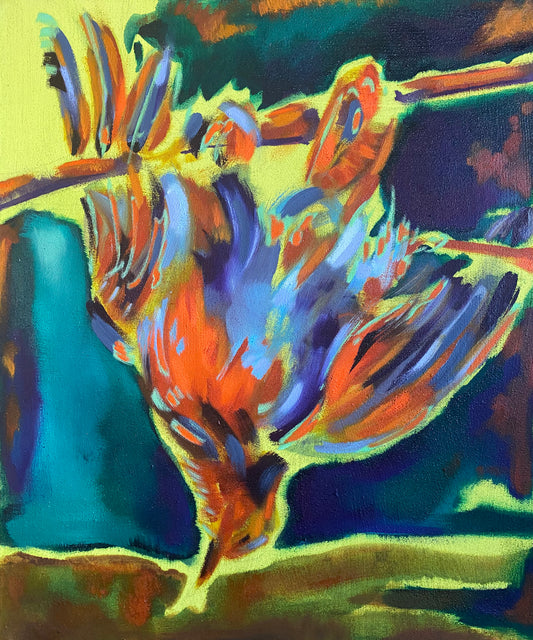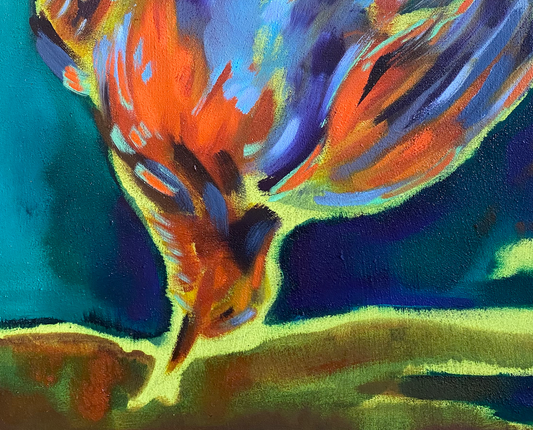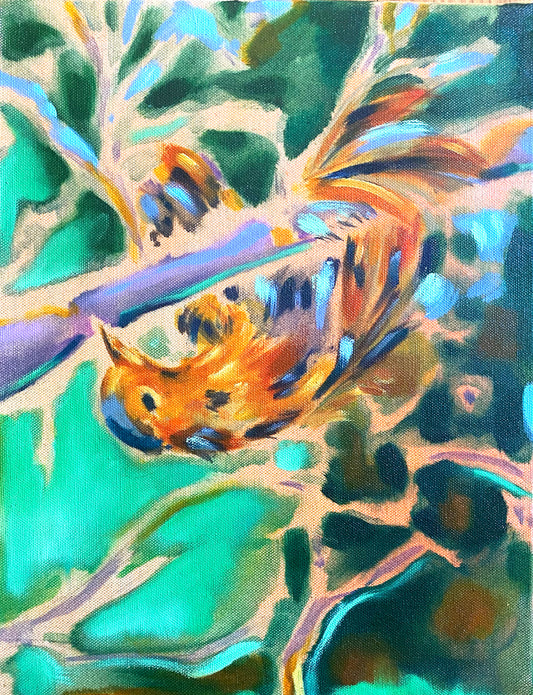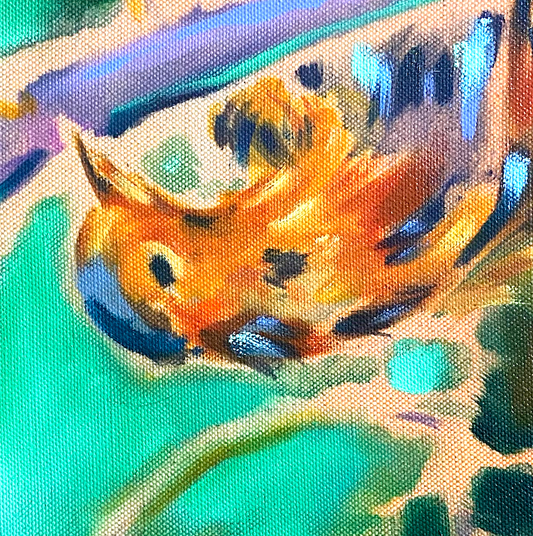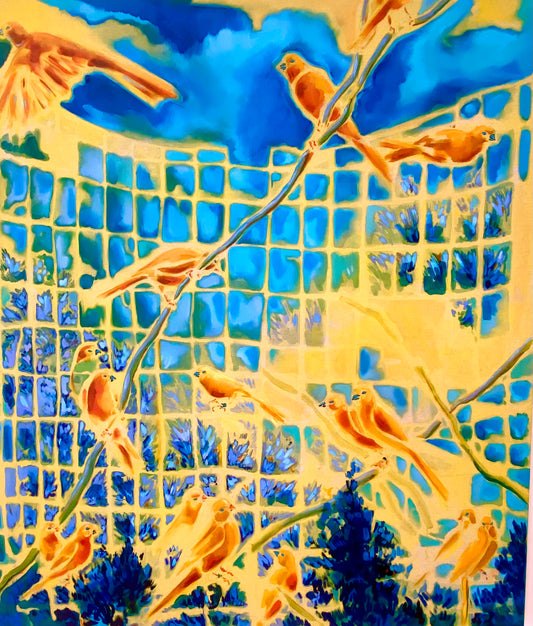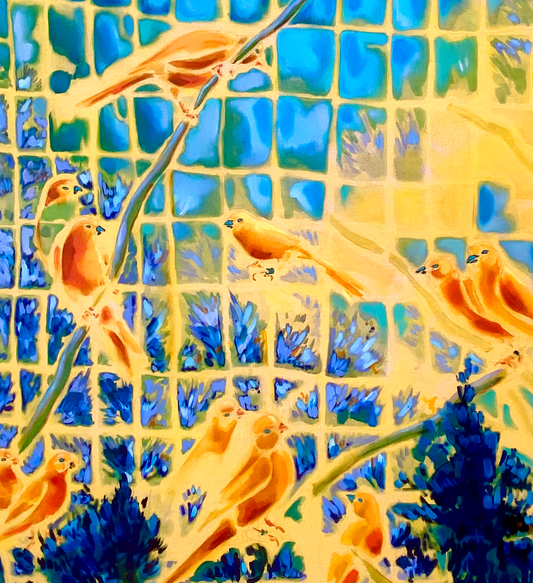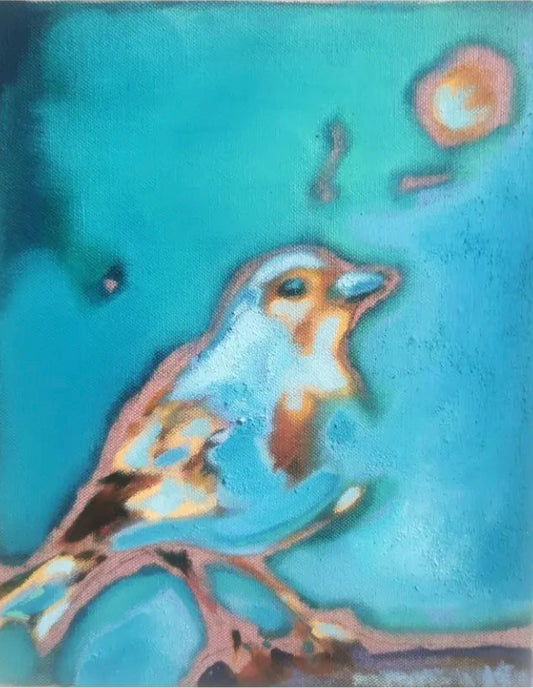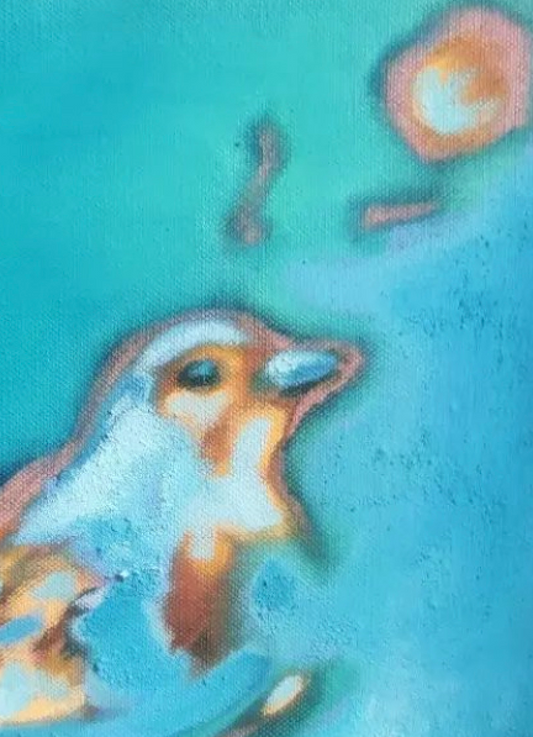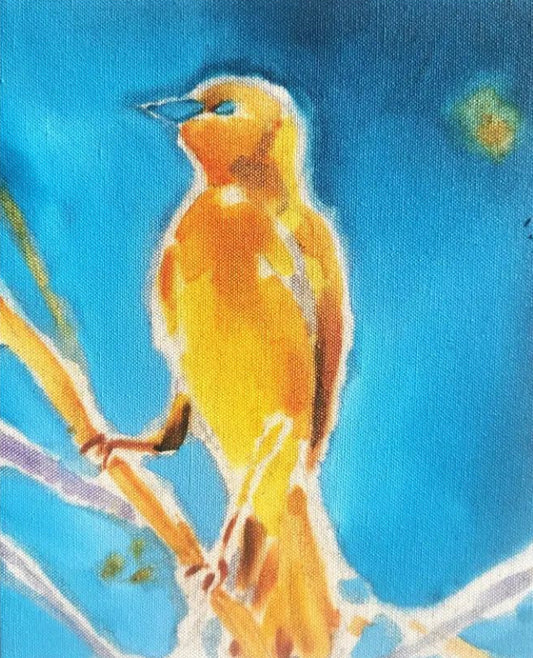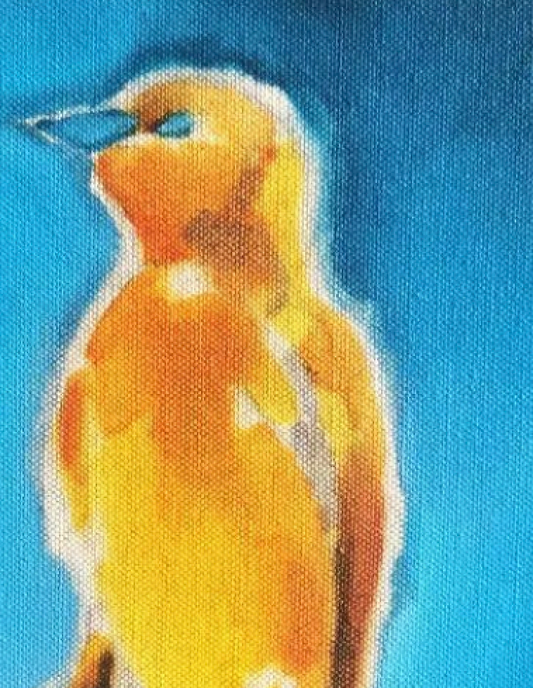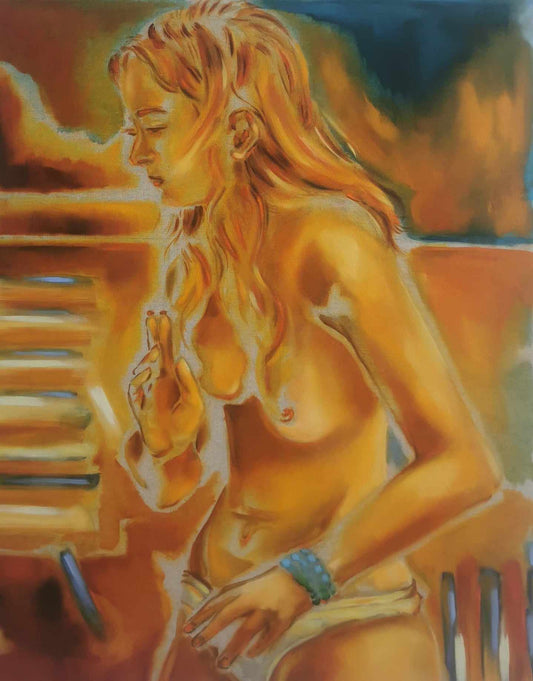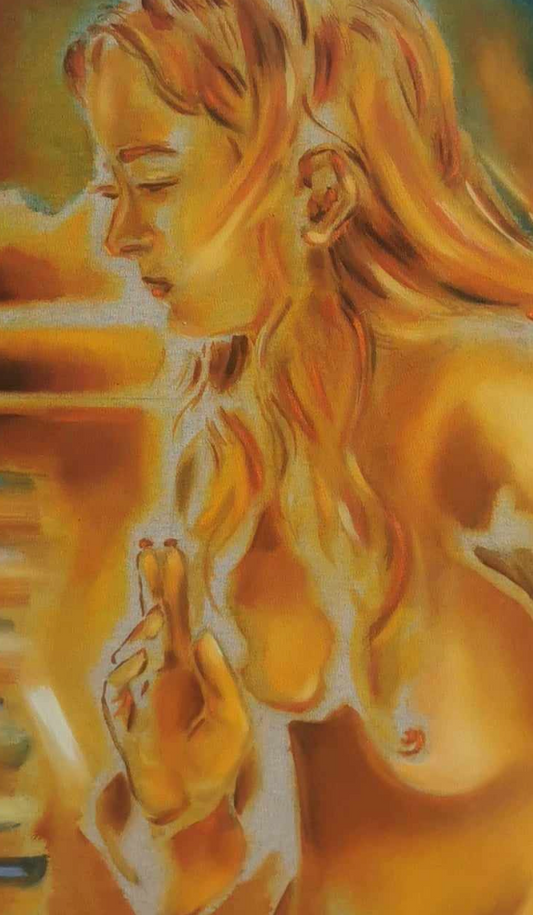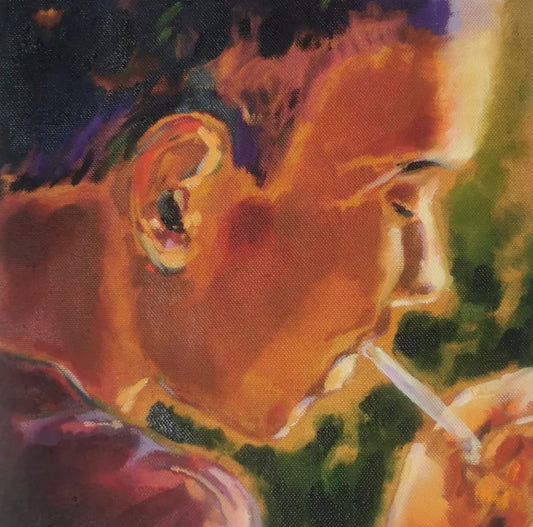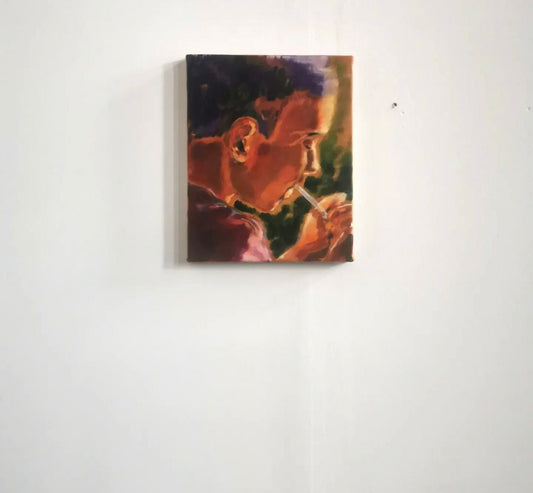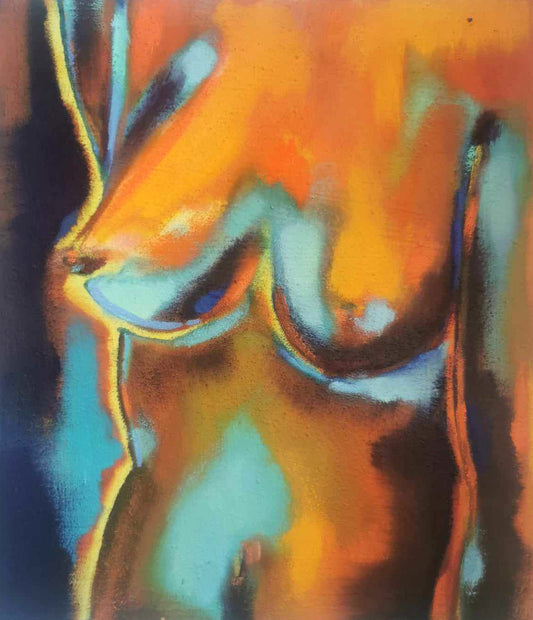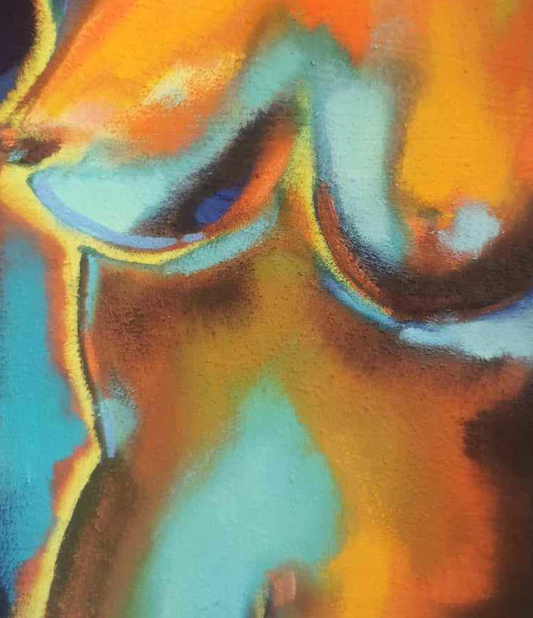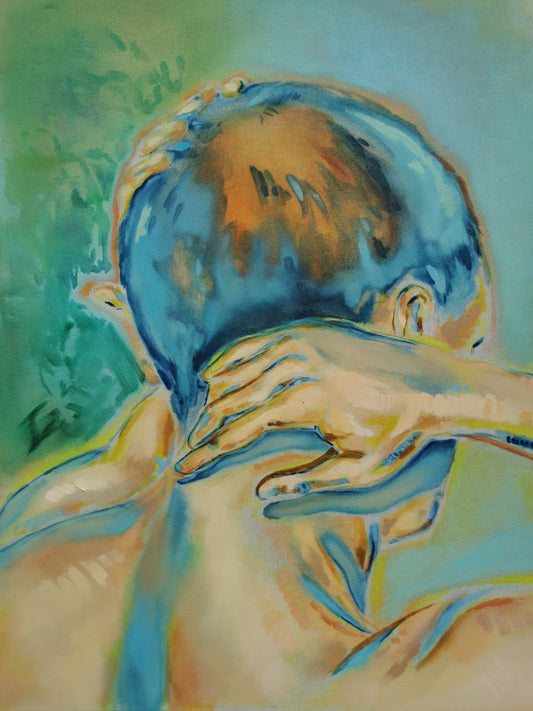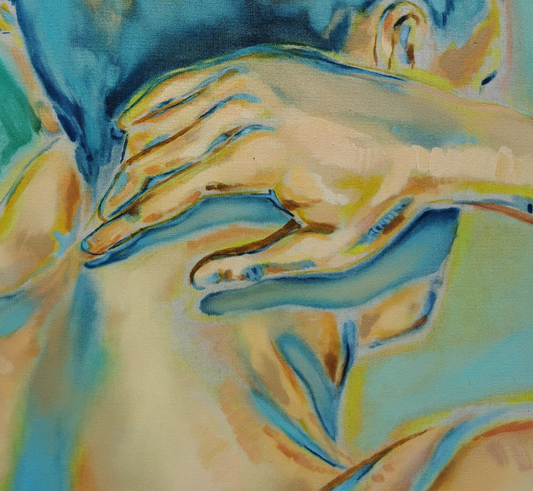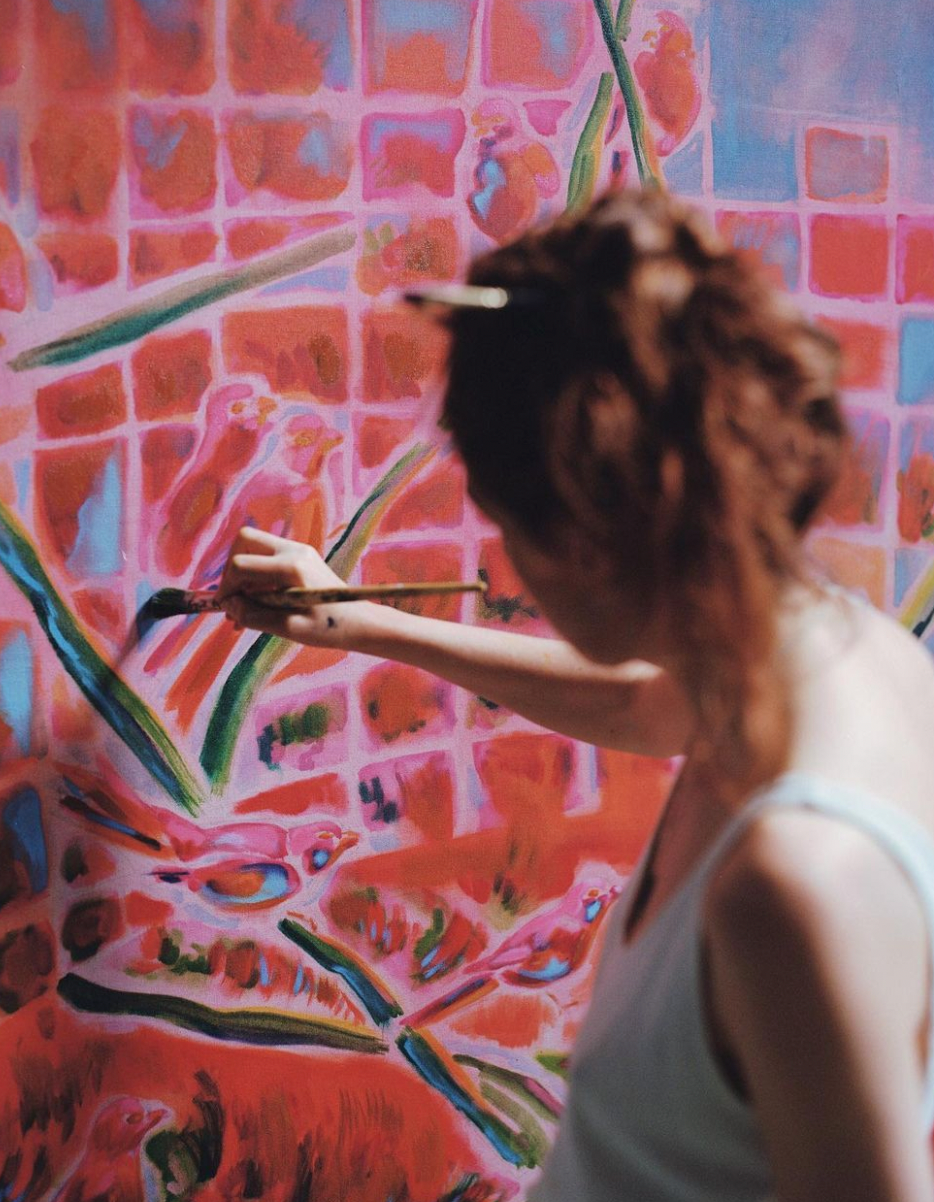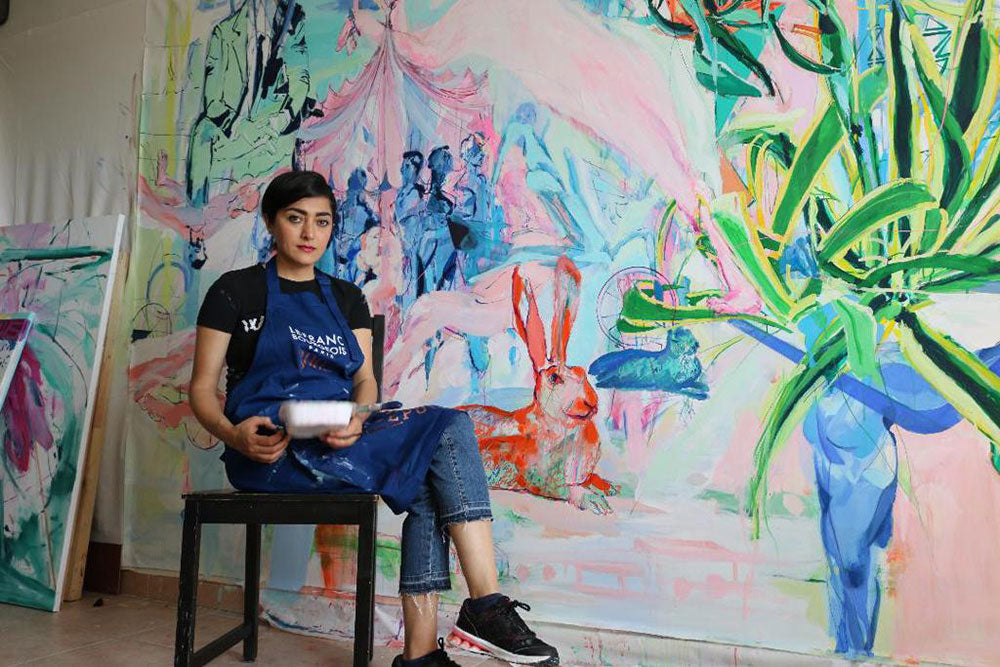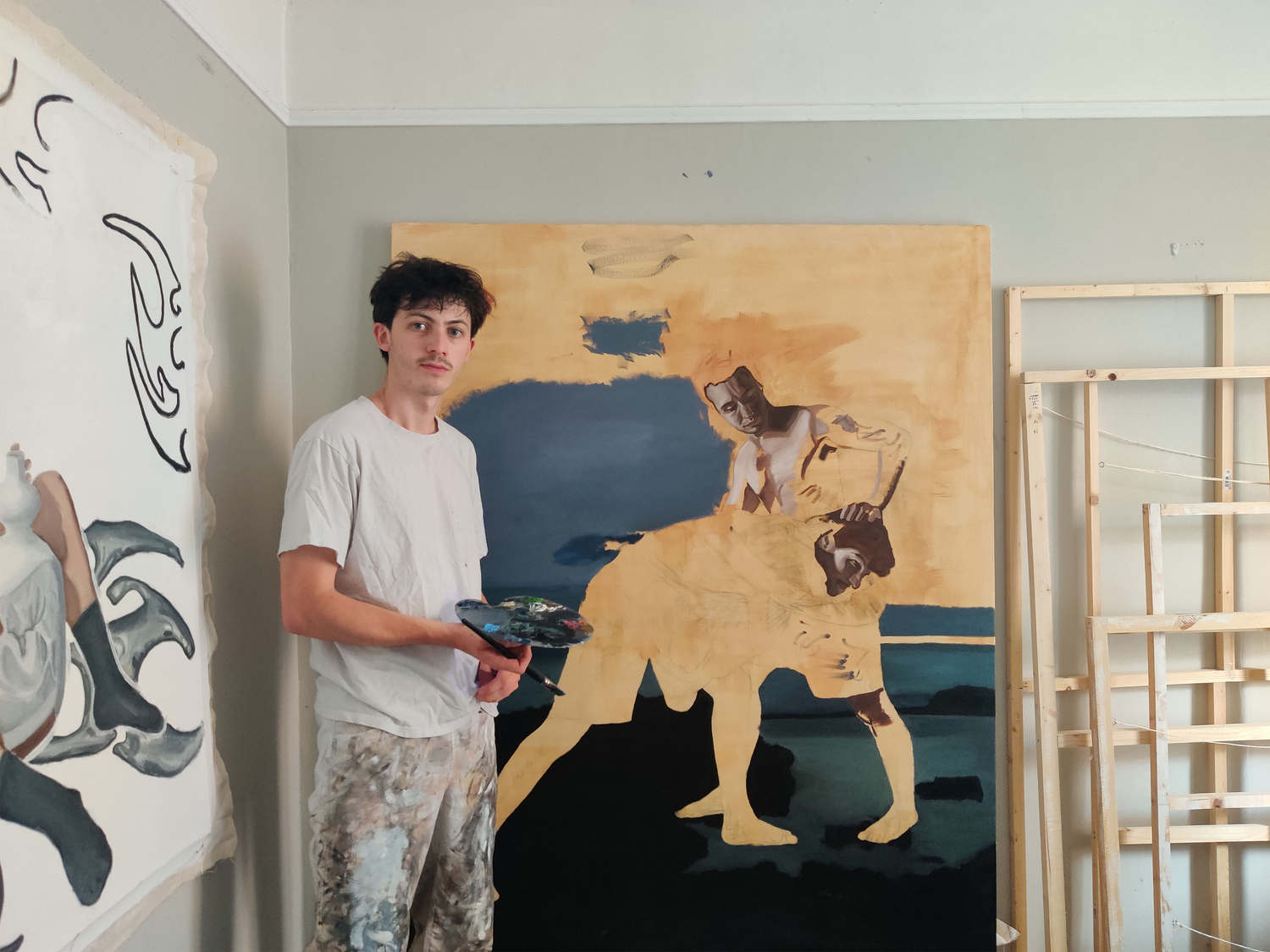It is a great bath of light: the skin expands and inhales the odors of the sun. Contours fade and whiten under the action of ozone, like a burnt image or discolored linen. We therefore do not know where these bodies begin and where they stop. It is also unclear whether they are clearly distinct from the landscape, since all the elements seem to be treated equally and porous to each other. Objects and shadows bite the limbs of the characters and the environment is diffuse and uncertain like a memory-fantasy. Is it a representation of metempsychosis, this phenomenon of transmigration of souls from one body to another?.
It is perhaps within photographic techniques that Barbara Penhouët's painting draws certain gestures and motifs. One thinks of the rayograms, superimpositions and solarizations of a Lee Miller or a Man Ray, but also of Roland Barthes' readings of photographic and chemical light: "The photo is literally an emanation of the referent. From a real body, which was there, came radiations which come to touch me, me who am here; regardless of the duration of the transmission; the photo of the disappeared being comes to touch me like the delayed rays of a star." .Also, the production of the photographic image - captured, revealed, projected - is not completely foreign to the treatment of pictorial matter by Barbara Penhouët. The artist uses a very diluted oil paint that she works by accumulations and erasures with a brush. Over a long period of time, the pigments more or less bite into the canvas, the frame of which sometimes remains visible in reserve: the image is a matter of patience, appearance and back and forth. It is almost a negative work since the chromatic values are reversed with respect to the source." Elora Weill-Engerer, Art Critic
-
PENHOUET BARBARA, INSTANT
Vendor:Barbara PenhouetRegular price $2,700.00Regular priceUnit price per -
Le Souffle
Vendor:Barbara PenhouetRegular price $4,000.00Regular priceUnit price per -
LA CHASSE A LA GLUE
Vendor:Barbara PenhouetRegular price $2,700.00Regular priceUnit price per -
LA CHASSE A LA GLUE 4
Vendor:Barbara PenhouetRegular price $1,200.00Regular priceUnit price per -
ECRAN TOTAL 5
Vendor:Barbara PenhouetRegular price $3,800.00Regular priceUnit price per -
CORPS SOLAIRE 11
Vendor:Barbara PenhouetRegular price $1,950.00Regular priceUnit price per

